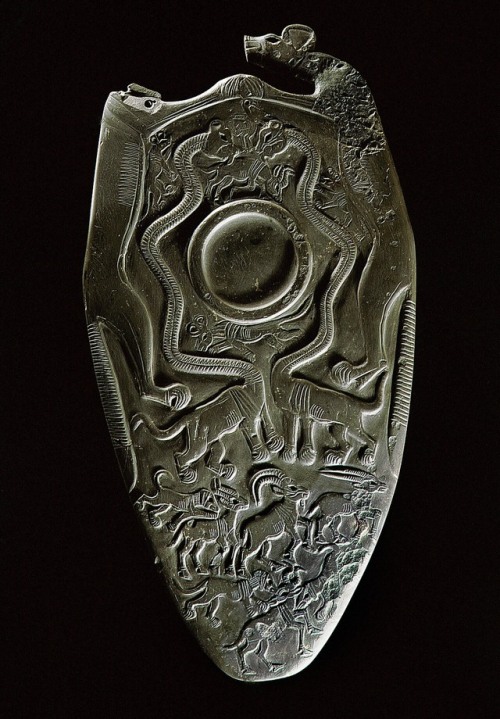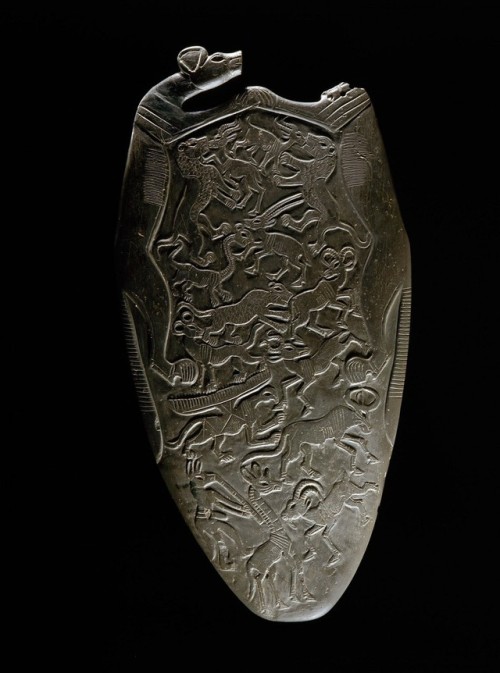avvoltoio: egypt-museum:Two Dog Palette The head of one of the dogs that frame the top of the pale
avvoltoio: egypt-museum: Two Dog Palette The head of one of the dogs that frame the top of the palette is missing, and two drilled holes at the base of the neck suggest that it was repaired in antiquity. On the reverse of the palette, a mixture of fabulous and real wild animals occupy the left-hand side of the scene from where they attack a range of herbivores native to North Africa. From the top, there are a pair of lions, a serpopard, a leopard, a hyena and a griffin with comb-like wings. At the bottom is a long-tailed dog-like creature wearing a belt and playing an end-blown flute. Presumably some of the imagery was carried to Egypt along trade routes, perhaps as seal impressions on containers, and the exotic creatures were adopted by Egypt’s early kings to express their otherworldly status and power. Predynastic Period. ca. 3300-3100 BC. Siltstone. From Hierakonpolis (Nekhen). Now in the Ashmolean Museum. Oxford. AN1896-1908 E.3924 This is my one favorite pieces of Egyptian art for the very reason that it’s so Un-Egyptian in its composition. It’s easy to notice when compared to the Narmer palette, which was created roughly a century or two later Although it’s not as elegant as the reliefs one would see in the Old, Middle and New Kingdoms, the Narmer palette clearly resembles typical Egyptian relief. The scenes contains iconography that will continue to be prominent in Egyptian art for millennia and the composition is rather organized. Earlier palettes are The two-dog palette on the other hand has a very chaotic composition that is hardly seen in Egyptian art. The closest equivalent that I can think of are battles scenes from the New Kingdom. where the Pharaoh is plowing through a sea of fallen enemies, which were purposely rendered to look as chaotic as possible. An example of this would be the reliefs depicting the slaughtering of the Sea Peoples at the Temple of Ramesses III in Medinet Habu . The two dog palette also might be purposely rendered chaotically as well if you consider the purpose of the animal with the flute at the bottom left of the palette. Some Egyptologists have suggested that this creature is an early representation of the god Set. The creature has ears which resemble the ears of Set, and is the only animal on the palette with anthropomorphic characteristics. As the god of chaos and trickery, Set could be easily responsible for the disorderly scene of animals. Predynastic Egyptian art is extremely interesting because it is so experimental compared the bulk of Egyptian art, which is so mind-numbingly standardized and consistent. It is fascinating to see which pieces of iconography survived for millennia, and which ones faded into existence with the dawn of Egyptian unification. -- source link
#archaeology#ancient egypt#artifacts#egyptology

